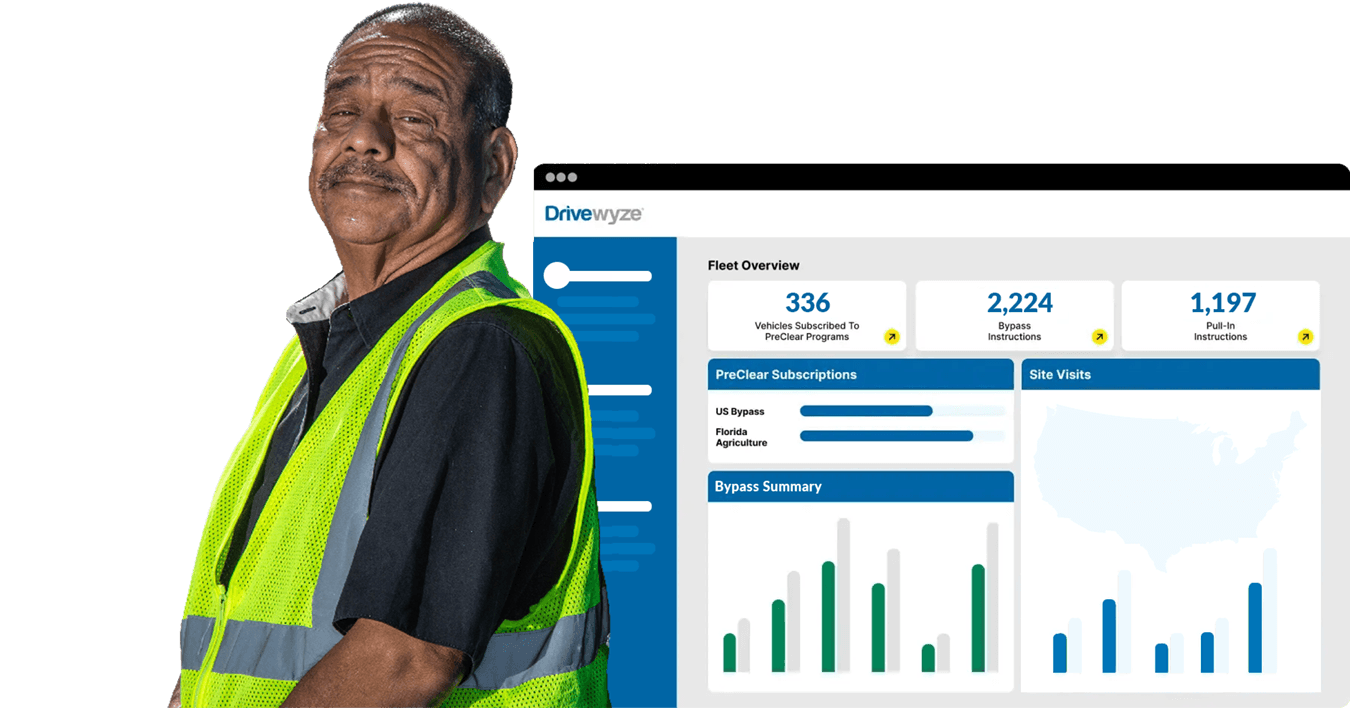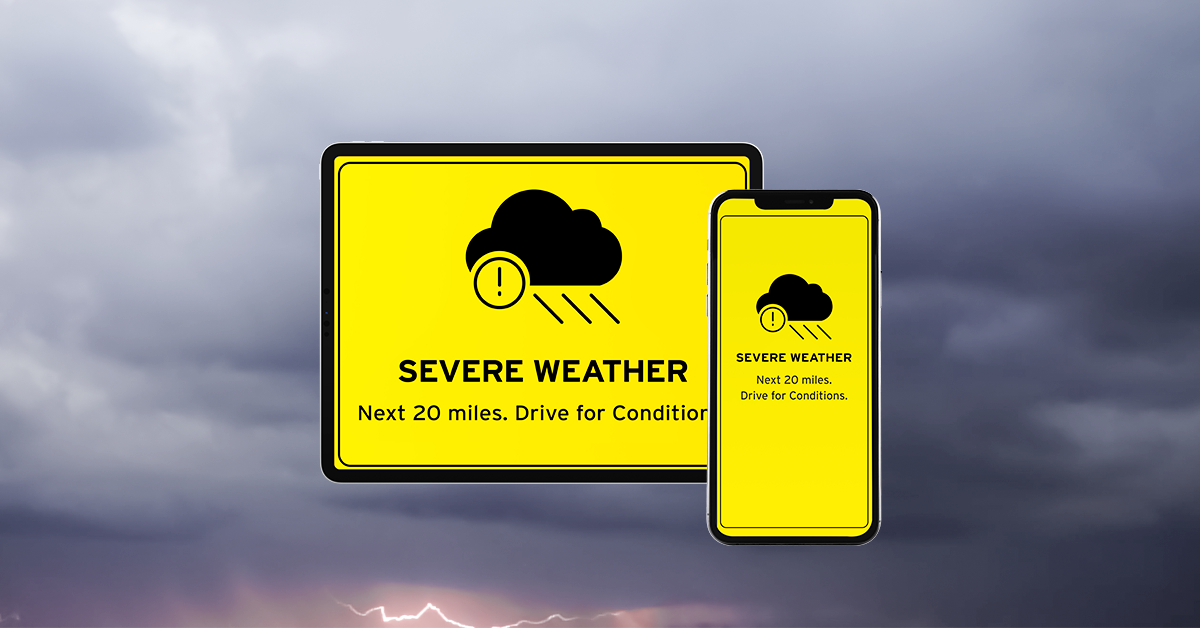Traffic delays are getting worse. According to the latest data collected by the American Transportation Research Institute (ATRI), the trucking industry experienced more than 996 million hours of delays on the national highway system, up from 728 million hours the year before. To put it in perspective, this lost productivity is equivalent to 362,243 truck drivers sitting idle for an entire working year, and an added $63.4 billion in operating costs.
Where do slowdowns happen?
Posing the question to a few veteran truck drivers about how to avoid being stuck in traffic, the best response was, stay home. In other words, traffic is something you just have to deal with. Bottlenecks, on the other hand, are situations that you can avoid. The Federal Highway Administration (FHWA) defines a traffic bottleneck as “A localized section of highway that experiences reduced speeds and inherent delays due to a recurring operational influence or a nonrecurring impacting event.” Bottlenecks have a myriad of causes. The worst ones tend to be at freeway on-ramps (where indecisive mergers and those that enter the highway at slower speeds to traffic cause brake lights to flash). Bottlenecks can at freeway-to-freeway interchanges and where physical restrictions exist like narrowing lanes, lack of shoulders, steep grades, and sharp curves.
Avoid at all costs
Each year the ATRI collects data on the most troublesome spots in the country. More than 600,000 truck drivers provide GPS data for researchers to study and analyze. The 2018 study evaluated 300 locations and looked at the following issues:
- Free flow speed: The “value at which congestion has no constraint on mobility.” In other words, researchers set a target speed that represents free flowing traffic. In this case, it’s 55 mph.
- Average truck speed and change from free flow: What is a truck’s average speed and how far is this from 55 mph?
- Hourly freight congestion value: With a little math, researchers figure out the total hourly truck congestion value.
- Total freight congestion value: This is a 24-hour overview of the trucks’ speed and change from free flow.
- Year-over-year (Y-O-Y) change: Basically, did things get better or worse? For the 2018 report this represents a percent change in the peak average speed from previous the year’s metrics.
And the winners (or losers) are:
Atlanta’s “Spaghetti Junction” of Interstates 285 and 85 takes the crown as the worst truck bottleneck location for the fourth year in a row. This snarl of highway connects The Perimeter, or I-285, with I-85, a major highway that runs northeast from Atlanta. According to the ATRI data, the average speed on the interchange was 37 miles per hour, significantly below the actual speed limits on the highways. It gets especially bumper-to-bumper during the afternoon rush hour, plunging to as low as 15 miles per hour between 5 p.m. and 6 p.m.
Fort Lee, New Jersey: I-95 at SR 4. As the primary highway running up and down the East Coast, and being in proximity to one of the highest population areas, it’s not surprising to see this area near the top of the list. The peak average speed runs at just 26 mph during rush hour traffic.
Chicago, Illinois: I-290 at I-90/I-94. This Windy City intersection held the top spot for so long that state of Illinois decided to make a change to the stretch of infrastructure and committed significant dollars to a redesign and rebuild. Construction is expected to be completed in 2019. Until then, proceed with caution and expect to slow down to an average speed of 22 mph during peak times.
For a complete list of all 100 bottlenecks, click here. (http://atri-online.org/2018/01/25/2018-top-truck-bottleneck-list)
What’s a trucker to do?
A new study by the ATRI (http://atri-online.org/2018/08/28/atri-research-quantifies-benefits-of-hours-of-service-flexibility-reduced-driving-time-and-lower-costs) indicates there are “potential benefits” to allowing truck drivers more flexibility when taking required hours-of-service breaks. Using GPS data to model the application of split rest beyond the 8- and 2-hour increments allowed under the existing HOS rules, the analysis found that drivers could spend less time and money while driving the same distances.
Using a representative “freight-significant” 40-mile stretch of urban highway in Atlanta to quantify the operational impacts of congestion, the study determined that it takes 40 to 90 minutes to traverse the highway during rush hours— more than doubling driving time and related operational costs of off-peak travel.
“Not surprisingly,” states ATRI, “the results indicate that AM and PM peak travel times (when commuters have the greatest demand for urban interstate highways) had the lowest average speeds and highest average travel times across the 40-mile study area.”
The fastest travel time of 39.9 minutes was from 1:00 to 1:59 am and a slowest travel time of 1 hour and 33.4 minutes occurred between 4:00 and 4:59 pm.
ATRI then modeled scenarios in which a “representative driver” operated under the current HOS rules and a “flexible” 6/4 split rest time. Under the flexible hours, the driver was able to avoid congestion, and completed a 585 mile trip with 45 fewer minutes of drive time. And this was just one of countless “severe chokepoints” on our nation’s highways where these rules could be applied by HOS-regulated drivers.
A conservative estimate based on the study showed that savings in annual drive time of more than 2.3 million hours, along with over $150 million in annual operational cost savings, could be realized with flexible HOS options.
“Under the current rules, when traveling through congested cities like Atlanta, I really have no choice but to sit stuck in traffic and watch my available hours tick away,” said Gary Helms, an over-the-road driver for Covenant Transport and an America’s Road Team Captain. “As ATRI’s study shows, with flexibility in the HOS, I could choose to rest during the worst congested times and make my delivery schedules with less time behind the wheel.”
The split time could make a lot of sense. We will see what happens in the quest for more productivity for drivers, coupled with adequate rest time.

Ready to Get Started?
Learn how North America’s leading carriers use Drivewyze to save money and improve safety.




